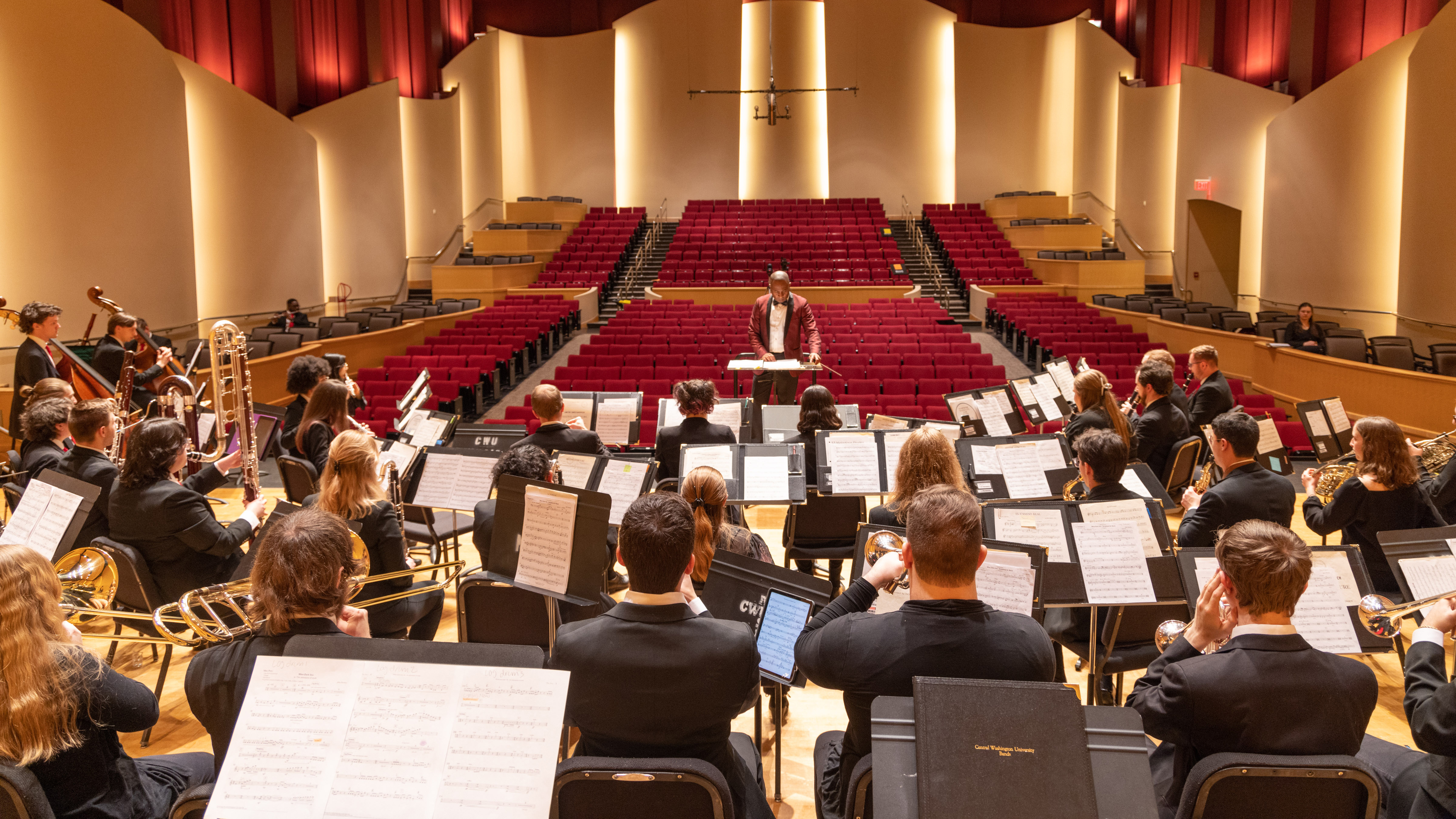
Music
Graduate Music History Review
This exam has five parts, each of which ask you to demonstrate familiarity with various aspects of what we perceive to be common musical knowledge for the educated, literate musician. The formats for each of these parts are as follows:
Listening examples
In this exercise you will be asked to provide written descriptions of various characteristics of a played musical excerpt. These characteristics include style period, approximate date, the type or genre of the composition, and the probable composer. You are expected to provide at least two reasons for your choice of style period. The musical examples are chosen to provide a clear, unambiguous sample of the characteristics you should know and recognize. Since the purpose of this exercise is to evaluate your ability to connect an aural presentation with cognitive definitions, you are not expected to know these works beforehand, and a list of the examples played is not given. A sample question and answer is provided in Appendix A (PDF).
Forms
You will be asked to provide a description and/or outline of the structural format of common musical forms, e.g. Minuet and Trio, Sonata Allegro, or Rondo. The names of the forms you are expected to know are included in the list of terms in Appendix D, and a sample answer is provided in Appendix A (PDF).
Compositions
You will be asked to match compositions with their composers. A complete list of these works, (but not their composers!) is provided in Appendix B (PDF).
Composers
You will be asked to name the style and at least two genres of an important composer’s music, his/her nationality and the approximate chronological time during which he/she lived. A complete list of these composers is provided in Appendix C and a sample answer is given in the Appendix (PDF).
Terms
You will be given a list of terms to define/describe. A complete list of the terms is provided in Appendix D and a sample answer is given in Appendix A (PDF).
Additional Information
A passing grade for this exam is 80%. Scoring less that 80% will result in required registration for MUS 380, Music History Review at the earliest possible opportunity.
Preparing for the exam.
Since all the possible questions relating to parts 2 through 5 are given in the appendices (PDF), it should be a simple matter to look up and become familiar with all the itemized data. Suggested sources for finding this information:
- Music Encyclopedias and Dictionaries, especially The New Grove Dictionary of Music and Musicians.
- General music history textbooks, such as those by Grout, Stolba, and Seaton.
- Style specific history textbooks, e.g. Reese’s Music in the Middle Ages, Plantiga’s Romantic Music, or Rosen’s Sonata Forms. The list is endless; browse through the stacks of any music library and you will get lots of ideas.
Music libraries are also a good place to become familiar with the compositions listed in the appendix. You can look up any unfamiliar work by name in a lexicographic source, or in the recordings or score catalogue, listen to it and look up relevant data from other sources (even the jacket notes). For more general sources, the CWU music library (4th floor, main library) has “Music History Review” listening CDs on reserve in the listening area. These items are for library use only and may not be taken out of the listening area. A list of those pieces are included in Appendix E (PDF). Most of the works on this list are taken from the Norton collection. You may order the two volume set of recordings called the Norton Anthology of Western Music from W. W. Norton and Co., 500 5th Ave., New York, NY; 1-800-233-4830; . The numbers to use when ordering:
- Vol. 1 (Medieval, Renaissance, Baroque)—ISBN 0-393-10608-X;
- Vol. 2 (Classical, Romantic, Modern)—ISBN 0-393-10609-8. Companion scores for these collections are also available.
Another anthology of recordings available in the library that you might find useful is the set of recordings that accompanies Joseph Kerman’s Listen: Fifth Brief Edition Bedford/St. Martin’s Press .,4B Cedarbrook Drive, Cranbury, NJ 08512; 1-800-446-8923. The ordering number for a paperback edition is 0-312-40115-9. A 3 cd set of examples is 0-312-41121-9 while a 6 cd set of examples is 0-312-41122-7.
Perhaps the most difficult part of the exam to prepare for in the short term is the first part, which evaluates your ability to recognize musical concepts from purely aural data (heard music). The difficulty is that it is not a matter of memorizing or learning information, but having the information already learned and connecting it to aural data—the music itself. This is an ability that takes time to develop, thus the difficulty of a short-term preparation. However, your ability to hear and recognize musical events is perhaps the most revealing benchmark of your musical skills and knowledge.
In preparing for this part of the exam, do not overlook sources that present concepts and information in a clear and simple fashion: some of the books written for college music appreciation classes present concepts and historical overviews in a concise and easily absorbed manner. The Kerman Listen book mentioned above is particularly useful in this regard. Indeed, if you become familiar with the period-specific characteristics of melody, rhythm, performance forces, genres and structure to the extent they are presented in this text (a text intended for the non-major!) you will have few problems with this part of the exam.
CWU News

CWU women’s rugby team earns six All-American selections
May 13, 2024
by University Relations

CWU Board of Trustees to Convene this week
May 13, 2024
by University Relations